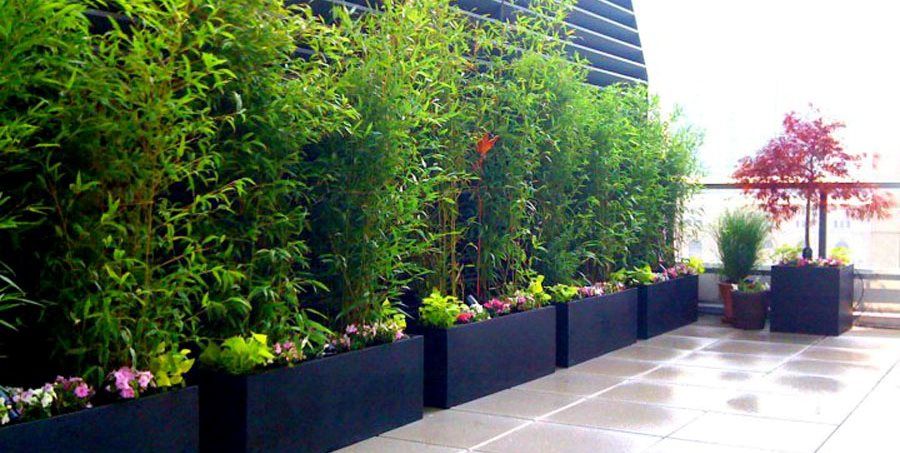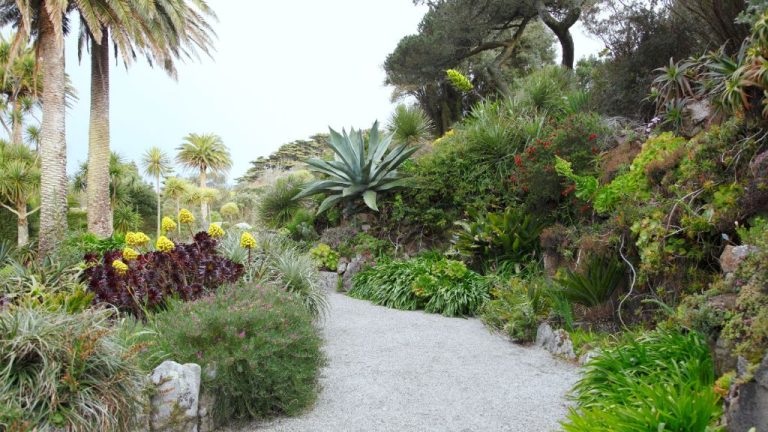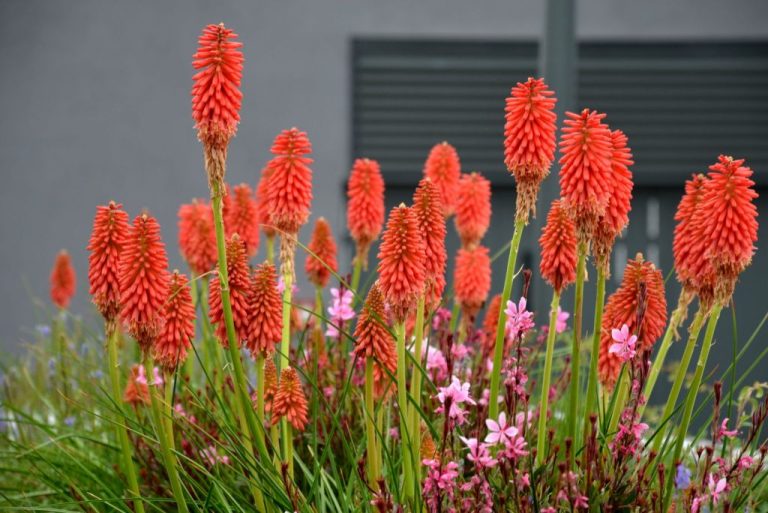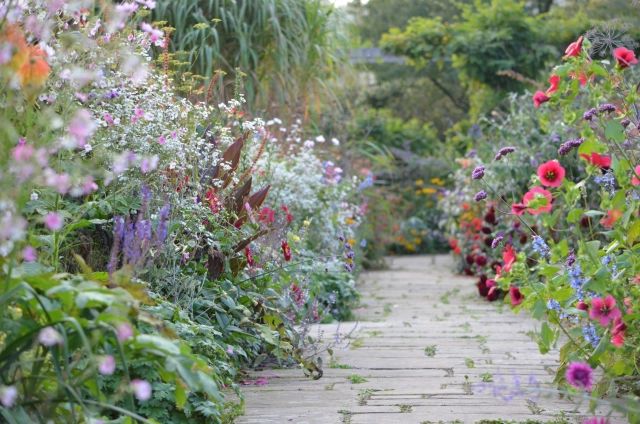Rooftop Garden Design: Green Spaces In Urban Settings
Rooftop gardens are green spaces intentionally created on the roofs of buildings in urban environments. Their purpose is to bring the benefits of gardens and green spaces to dense city settings where ground-level space is limited. Rooftop gardens can take various forms, from simple container gardens to elaborate landscaped areas covering most of a roof surface. Their benefits in urban settings are widely recognized, including improved air quality, urban cooling, stormwater management, wildlife habitat, food production, increased biodiversity, and positive psychological impacts for building occupants with access to green space.
https://treescience.com.au/blog/benefits-rooftop-gardens/
History and Evolution
Rooftop gardens have been around for thousands of years. Early examples of rooftop gardens include those built on the ziggurats of ancient Mesopotamia around the 4th millennium BC. These structures featured terraced plantings of trees and shrubs.
In ancient Egypt, roof gardens were a status symbol among the wealthy and elite. They used rooftop gardens to grow fruits, vegetables, and vines. The ancient Hanging Gardens of Babylon, one of the Seven Wonders of the Ancient World, were possibly constructed as a series of cultivated roof gardens for a royal palace.
In ancient Rome, roof gardens became popular among the upper class as retreats from the noise and heat of the city. Wealthy citizens grew various plants, trees, and even fish ponds on their rooftops. Roof gardens were also prominent in Germany and Russia from the 1600s to 1875, including large roof gardens at the Hermitage and Kremlin.
Over time, roof garden design evolved with the development of waterproof membranes and lightweight soil mixes. This allowed the creation of sophisticated garden landscapes and vegetation on rooftops without overburdening buildings. Innovations in green roof technology and sustainable building practices have further expanded possibilities for rooftop greenery in modern cities.
Design Considerations
When designing a rooftop garden, some key structural and environmental factors need to be taken into account:
Structural requirements and load-bearing capacity are crucial considerations. The roof must be able to safely support the weight of the garden, soil, plants, and any people accessing the space. Waterproofing is also essential to prevent leaks and moisture damage. Proper drainage and irrigation systems need to be installed as well. According to Guide to Rooftop Gardens, railings around rooftop gardens should conform to local safety laws.
The amount of sunlight, wind, and ventilation the roof area receives will impact what can be grown. Rooftop gardens are often very exposed, so plants need to be selected that can thrive in hot, dry, and windy conditions. But the design should also incorporate shade and windbreaks as needed. As noted in 10 Things to Remember When Designing Rooftop Gardens, analyzing sun exposure, airflow, and microclimates on the roof space should inform the garden layout and choice of plants.
Plant Selection
When choosing plants for a rooftop garden, it’s important to select varieties that can thrive in the unique growing conditions found in urban environments (1). Key factors to consider include:
Climate suitable plants – Make sure to choose plants adapted to your hardiness zone and able to withstand temperature extremes common on rooftops. Many Mediterranean plants like lavender, rosemary and sedum do well. Also consider native plants acclimated to the regional climate.
Light and irrigation requirements – Rooftop gardens experience full sun exposure, reflected light and heat, and drying winds. Drought-tolerant plants suited to these conditions include succulents, ornamental grasses and herbs. Grouping plants by light and water needs streamlines irrigation.
Maintenance needs – Opt for low-maintenance plants that are disease- and pest-resistant. Fuss-free choices include sedums, sempervivums, lavender and thyme. Avoid invasive or overly aggressive spreaders that require frequent pruning.
It’s also important to use lightweight soil mixes and containers to avoid overloading the building’s structural capacity (2). Consulting with a horticulturist familiar with rooftop gardening is recommended when selecting the optimal plants.
Green Roofs vs. Rooftop Gardens
Rooftop gardens differ from green roofs in several key ways[1]:
Green roofs are shallower systems between 2-6 inches deep that allow for drainage and lightweight growth. They are designed primarily for energy efficiency, water runoff reduction, and other sustainability benefits. Plants are chosen for hardiness, low maintenance, drought tolerance, and ability to thrive in shallow soil. Access to green roofs may be limited for maintenance purposes only. Rooftop gardens, on the other hand, resemble a conventional garden with deeper soil beds that can support vegetables, shrubs, small trees, and more diverse plantings. They typically range from 8 inches to several feet deep and are designed for human recreation and enjoyment in addition to sustainability. Rooftop gardens allow for easy access and provide aesthetic and lifestyle benefits akin to a garden at ground level[2].
Cost comparisons also differ substantially. Extensive green roofs with shallow soil depths and minimal plantings can start as low as $10-20 per square foot installed. Rooftop garden systems with drainage, irrigation, planters, soil, and diverse plants often run between $25-50 per square foot. While more costly upfront, rooftop gardens provide far greater usable space and recreational payoff compared to minimalist green roof systems[3].
[1] https://simplicable.com/world/green-roof-vs-roof-garden
[2] https://evolvement.squarespace.com/green-wall-information/green-roof-information/2021/1/30/rooftop-garden-vs-greenroof
[3] https://evolvement.squarespace.com/green-wall-information/green-roof-information/2021/1/30/rooftop-garden-vs-greenroof
Environmental Benefits
Rooftop gardens provide several key environmental benefits for urban areas according to studies. One major benefit is improved air quality. Rooftop gardens absorb air pollutants and carbon dioxide while releasing oxygen through photosynthesis. Research in Toronto found that one square meter of green roof can offset the annual particulate matter emissions of one car (CalRecycle).
Rooftop gardens also help mitigate the urban heat island effect, which is caused by dark-colored rooftops and pavements absorbing heat. By covering rooftops with vegetation, surface temperatures can be reduced by up to 40°F compared to conventional roofs (CalRecycle). The cooling effect benefits buildings by reducing air conditioning needs while also improving comfort at street level.
Additionally, rooftop gardens provide stormwater management. The vegetation layers can absorb and retain significant amounts of rainfall that would otherwise contribute to stormwater runoff. Rooftop gardens can capture 60-100% of stormwater compared to just 10-20% absorbed by conventional rooftops (Treescience). Less runoff also reduces pressure on drainage systems and helps prevent flooding.
Lifestyle Enhancements
Rooftop gardens provide several lifestyle benefits for urban residents, offering leisure and recreation space in dense city environments.According to the EPA, green roofs give city dwellers access to open space for relaxation and enjoyment. Rooftop gardens create opportunities for urban recreation and social gatherings above crowded city streets.
In terms of urban farming and gardening, rooftop gardens allow city residents to grow their own fruits, vegetables, and herbs. Rooftop community gardens provide space for urban agriculture and give people more autonomy over their food supply. Gardening on rooftops is an innovative way to promote local food production in dense urban environments with limited ground-level green space.
Finally, rooftop gardens have aesthetic value, providing eye-catching scenery and green relief from concrete cityscapes. According to Encyclopedia Britannica, rooftop greenery enhances urban architecture and makes cities more visually appealing places to live and work. Rooftop gardens offer natural beauty and improve residents’ surroundings in congested cities where parks and nature are scarce.
Implementation Challenges
Constructing rooftop gardens comes with several implementation challenges that must be considered before getting started. Some key difficulties include:
Structural load capacities – Rooftop gardens can add a significant amount of weight in soil, plants, and irrigation systems to the roof of a building. Older buildings in particular may not be designed to handle these extra loads, requiring reinforcement of the existing structure (Frontiers in Sustainable Food Systems, 2020). This can add substantially to the overall project costs.
High development costs – Even for buildings that can structurally support a rooftop garden, the initial investment remains quite high compared to a traditional roof. Major expenses include waterproofing, drainage and irrigation installation, soil placement, and ongoing maintenance fees (Atlantis Press, 2018). Securing the financing for rooftop farms can be a challenge.
Maintenance requirements – Keeping a rooftop garden functioning well requires regular upkeep, including weeding, pest control, replanting, equipment checks, and more. Property managers must budget for the higher maintenance workload compared to a standard rooftop (Princelandscape, 2023). Neglecting maintenance can lead to rapid deterioration of the garden.
Innovative Examples
Rooftop gardens around the world showcase creative and unique designs that make the most of urban spaces. Here are some notable projects:
The Eden Project in Cornwall, UK transformed a former china clay quarry into an impressive rooftop garden covering 16 acres. Known as the world’s largest greenhouse, it contains plants from diverse climates across the globe, all housed under transparent domes on the roof.[1]
The Gardens by the Bay in Singapore features 18 supertree structures up to 50 meters tall, each with vertical gardens integrated into the trunk and canopy. The supertrees collect rainwater and host over 200 species of plants.[1]
The Sky Garden in London allows the public to access impressive green spaces across three terraces at the top of the Walkie Talkie building. The gardens stand 155 meters above the city and offer panoramic views.
The Paris city hall contains a rooftop garden spanning over 6,800 square feet. It features lush greenery, swaying grasses, diverse plant varieties, and pedestrian walkways.
The Oasia Hotel in Singapore creatively incorporates vertical greenery across 21 stories of its exterior façade, blending city infrastructure with abundant nature.
The Academy of Sciences in San Francisco’s Golden Gate Park has a rolling rooftop garden covering 2.5 acres. It contains 1.7 million native plants, immersing visitors in the biodiversity of California’s varied ecosystems.
Future Outlook
Rooftop gardens are projected to continue growing in popularity as more cities recognize their benefits. According to this report, the global green roof market is expected to grow at a CAGR of over 17% from 2021 to 2026 as environmental concerns drive adoption. Key trends influencing future growth include new technologies like hydroponic and aeroponic systems that maximize limited growing space, integration of solar panels to make gardens energy neutral or positive, and growth of commercial rooftop farming operations.
In terms of sustainability, rooftop gardens can significantly reduce a building’s energy usage, stormwater runoff, urban heat island effect, and air pollution. Widespread adoption in cities could have a measurable positive environmental impact. For example, one study found that if all suitable rooftops in Melbourne, Australia were converted to gardens, the city’s average temperature could decrease by up to 3°C. With climate change threatening urban resiliency, rooftop gardens represent an important ecological solution.






